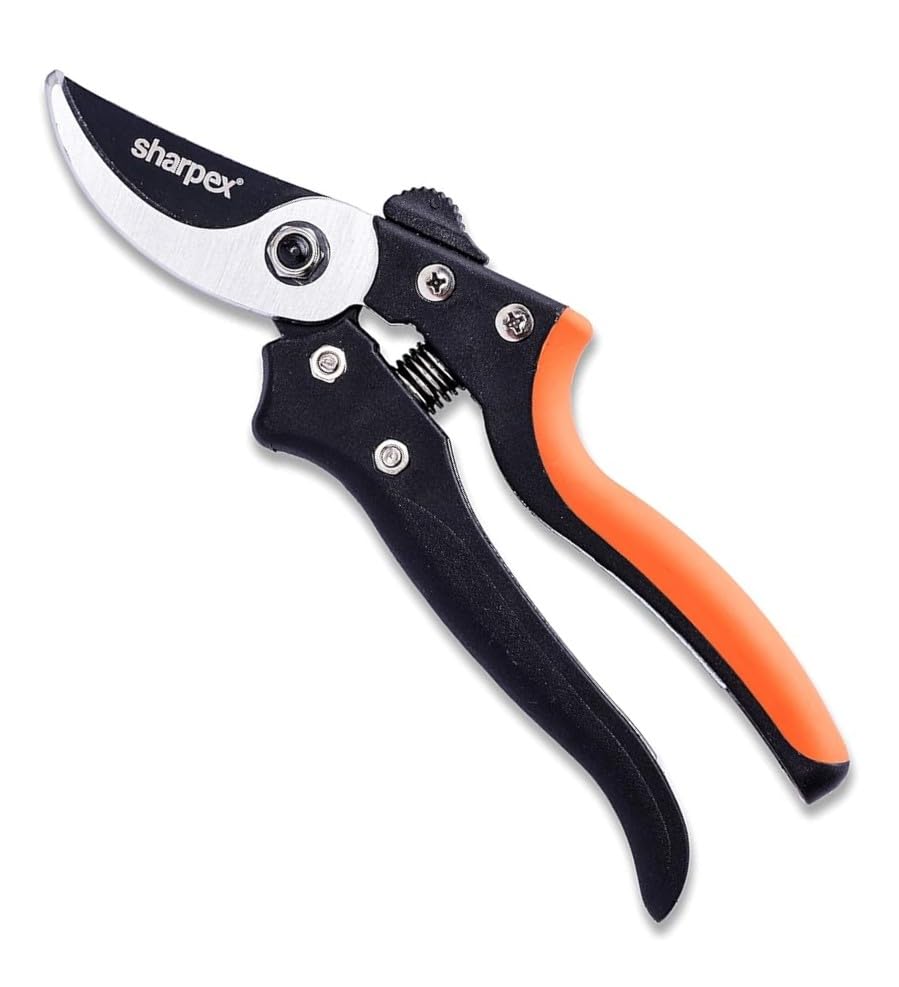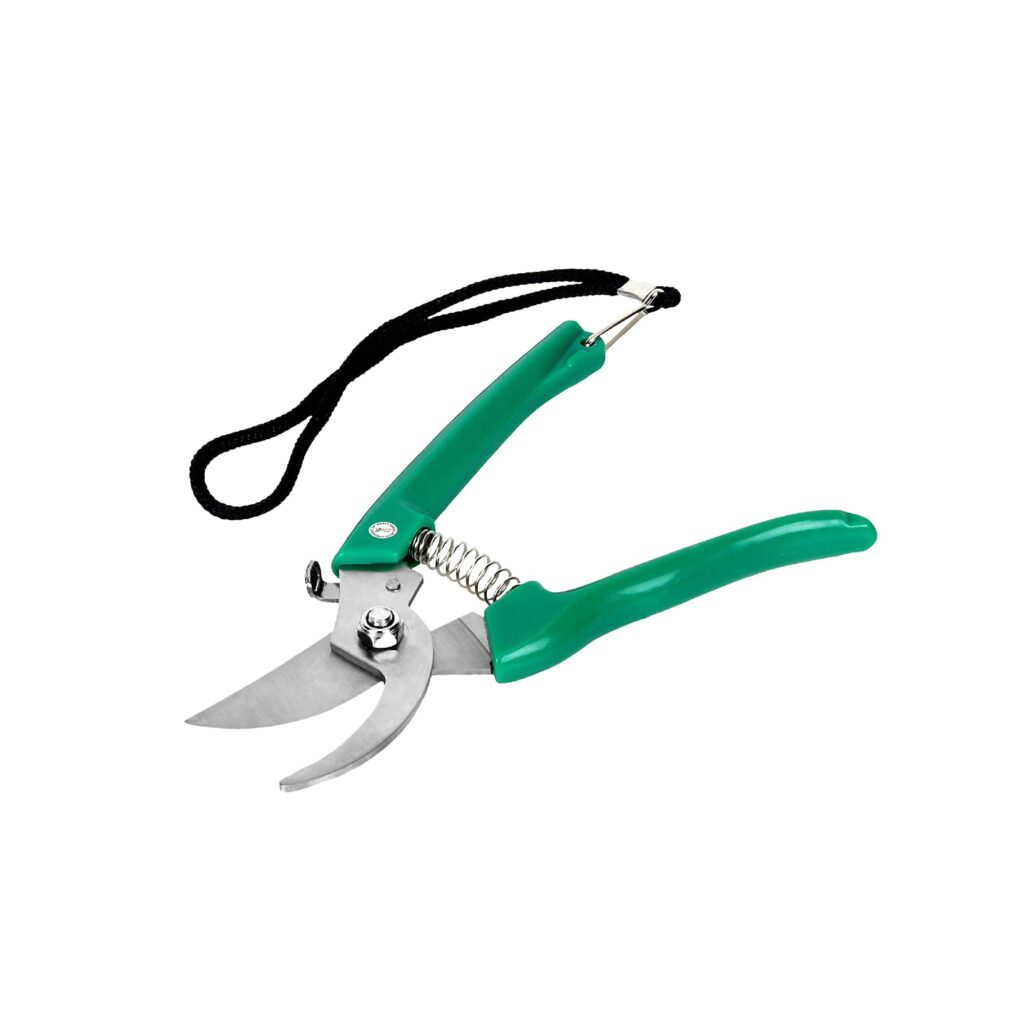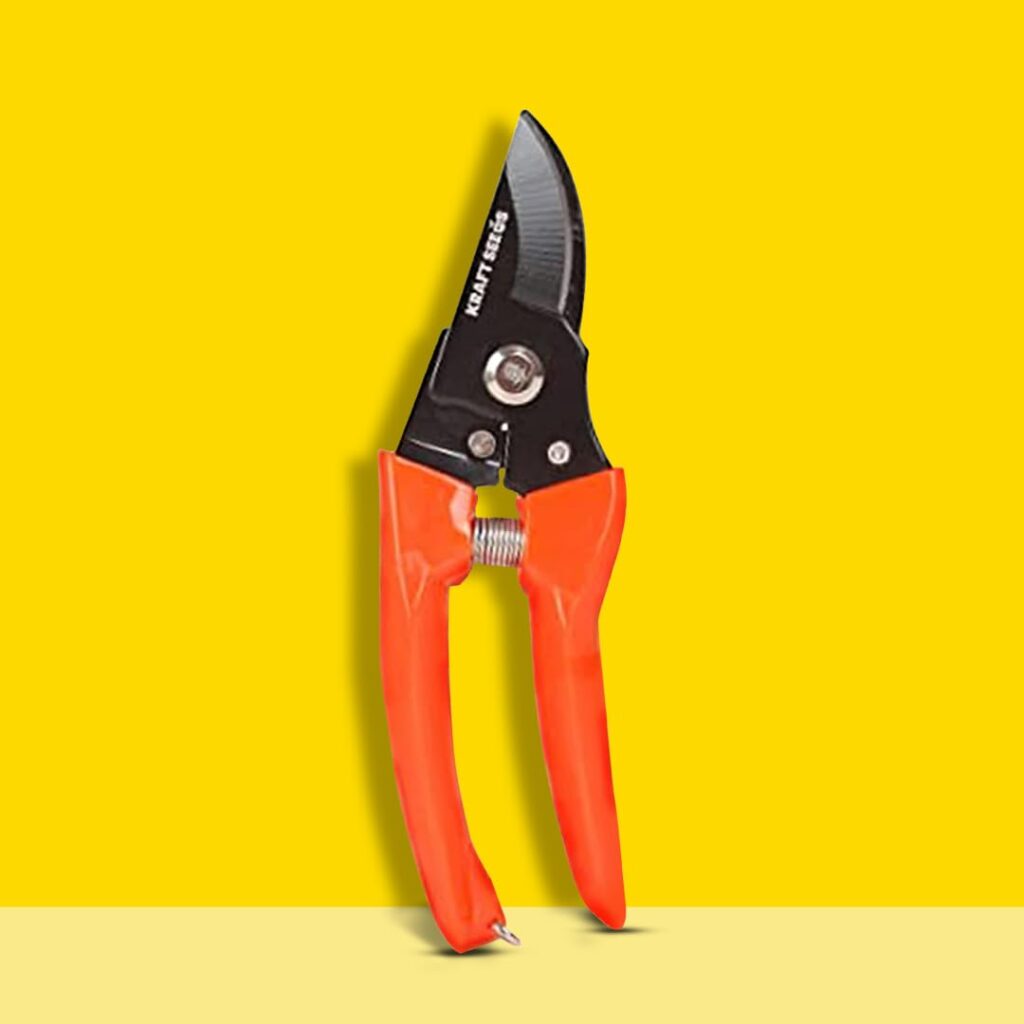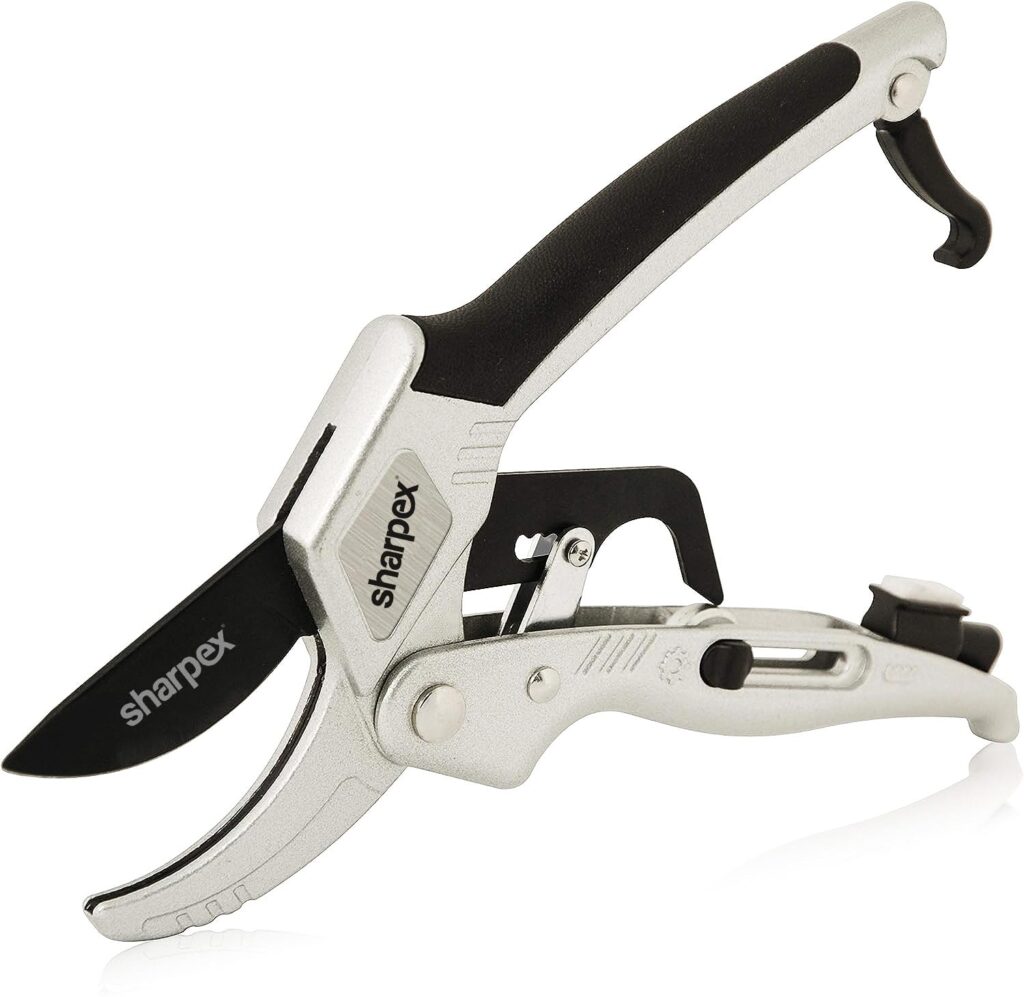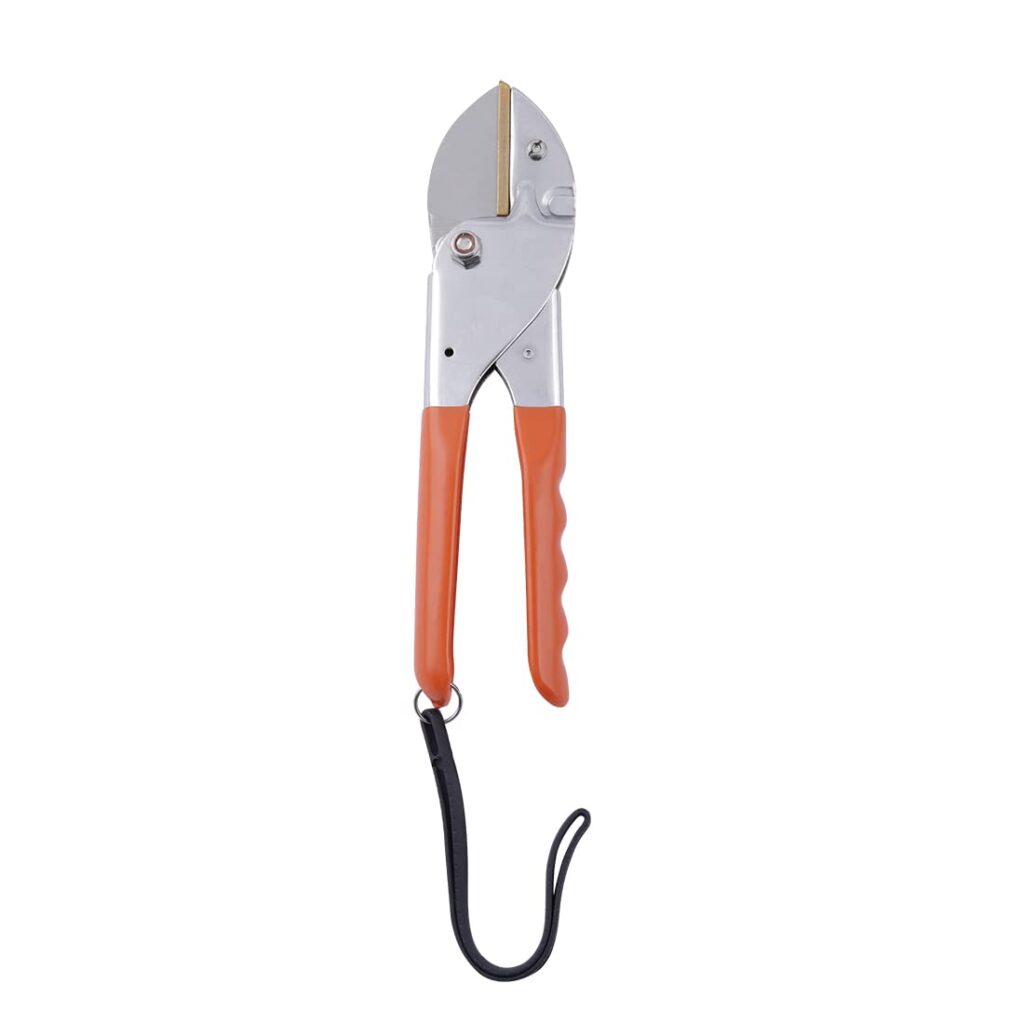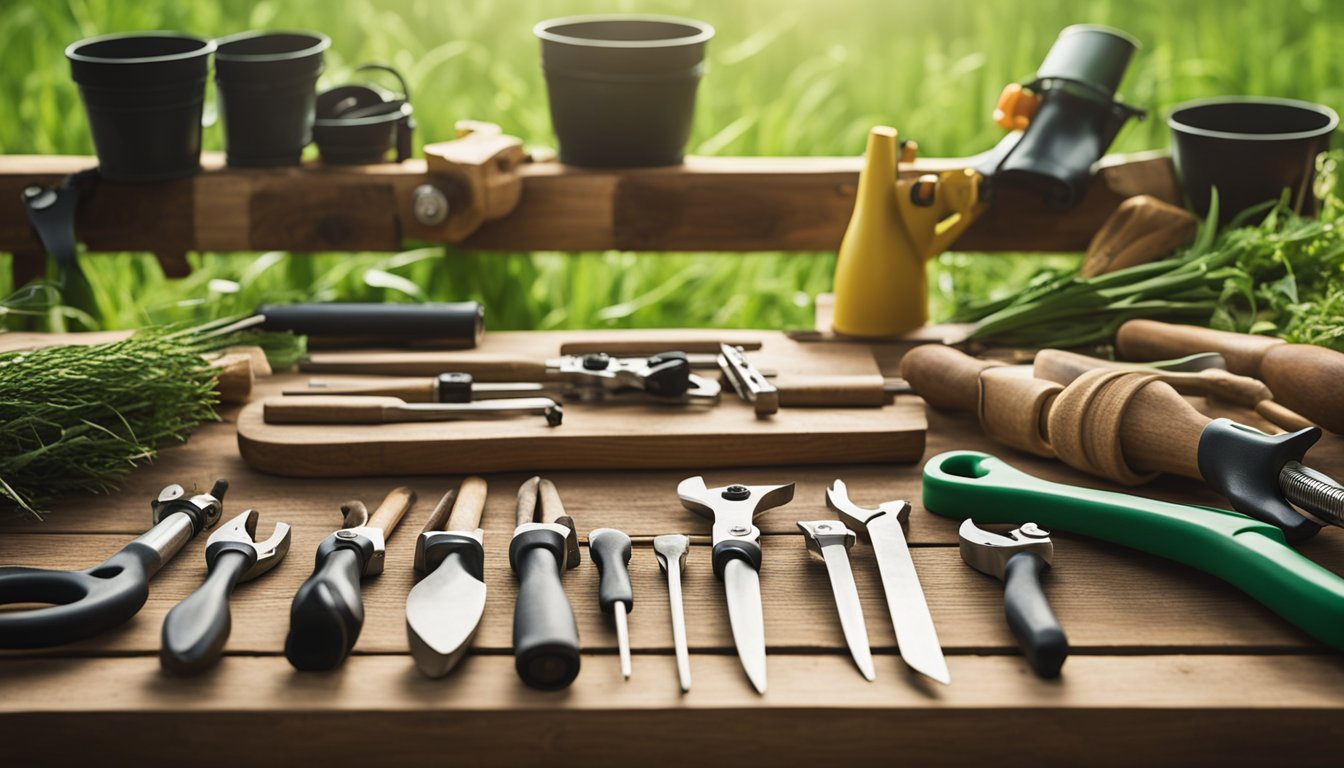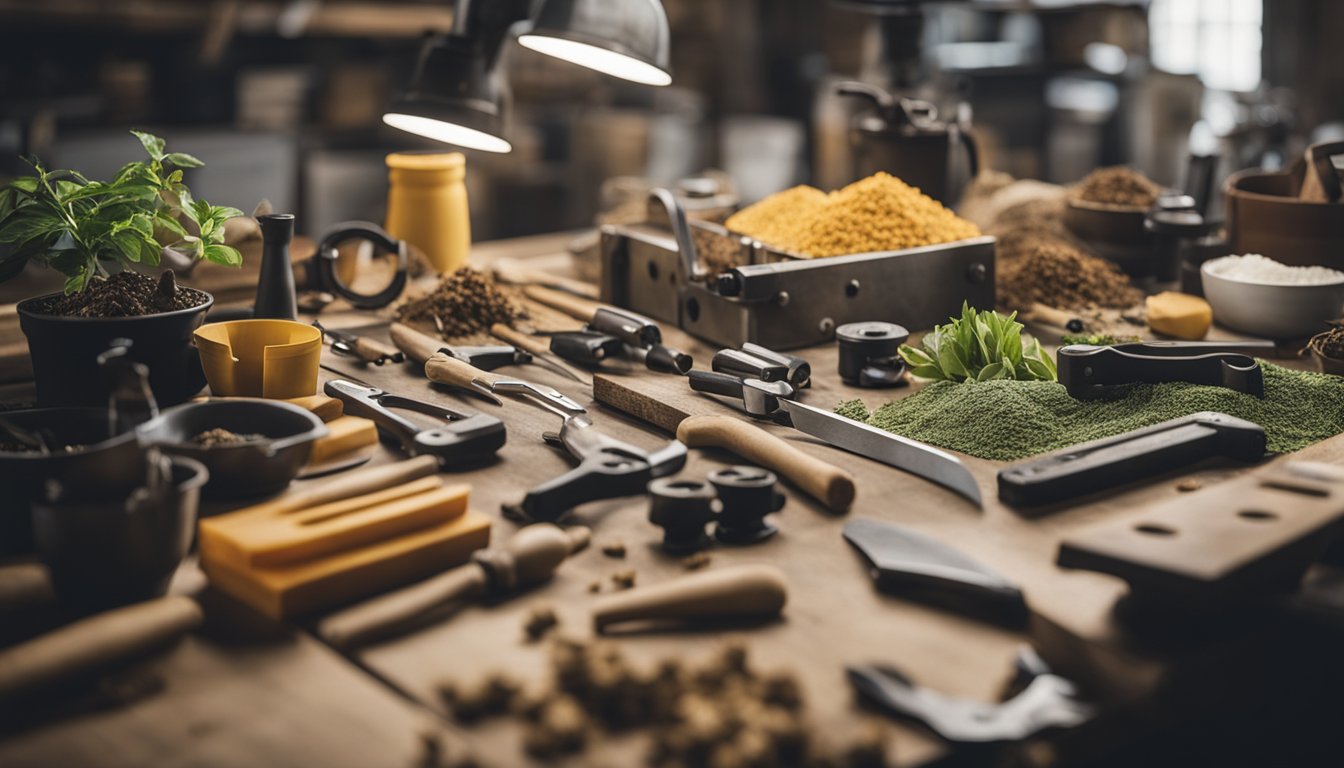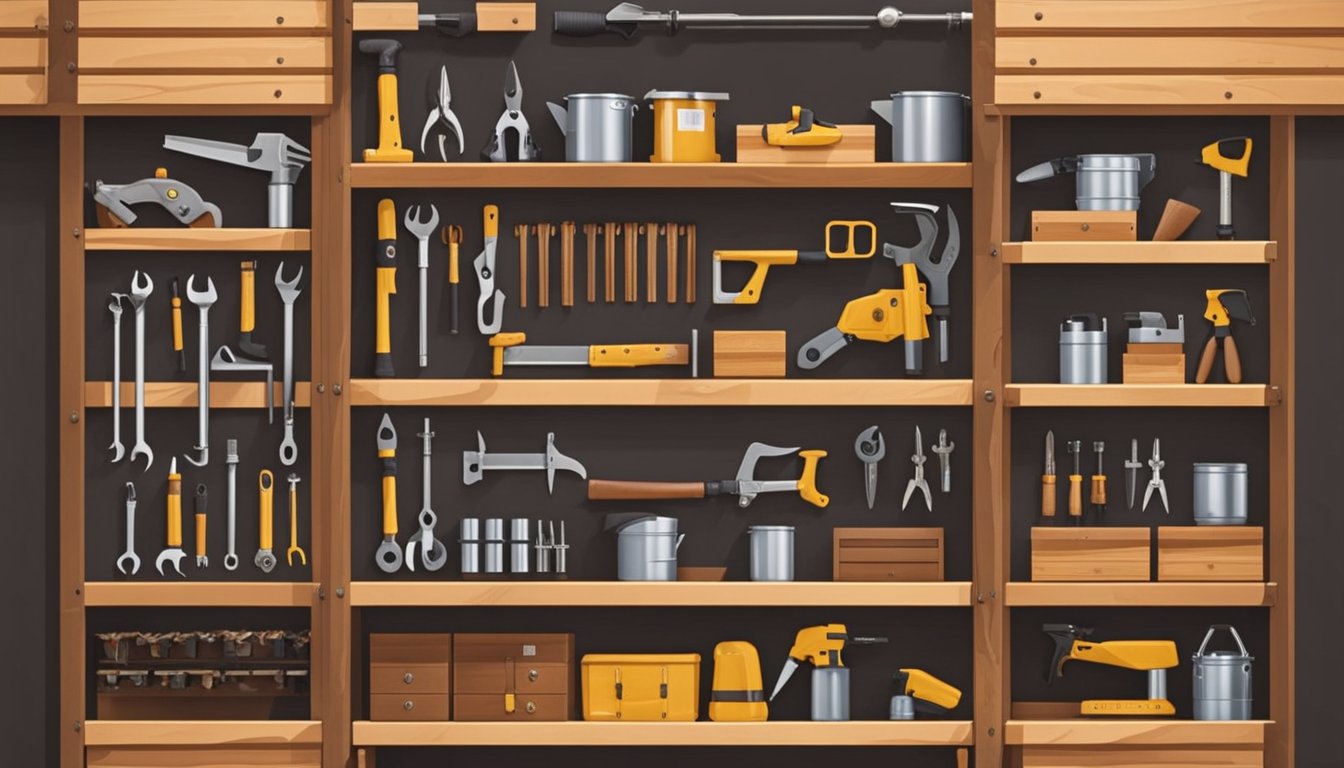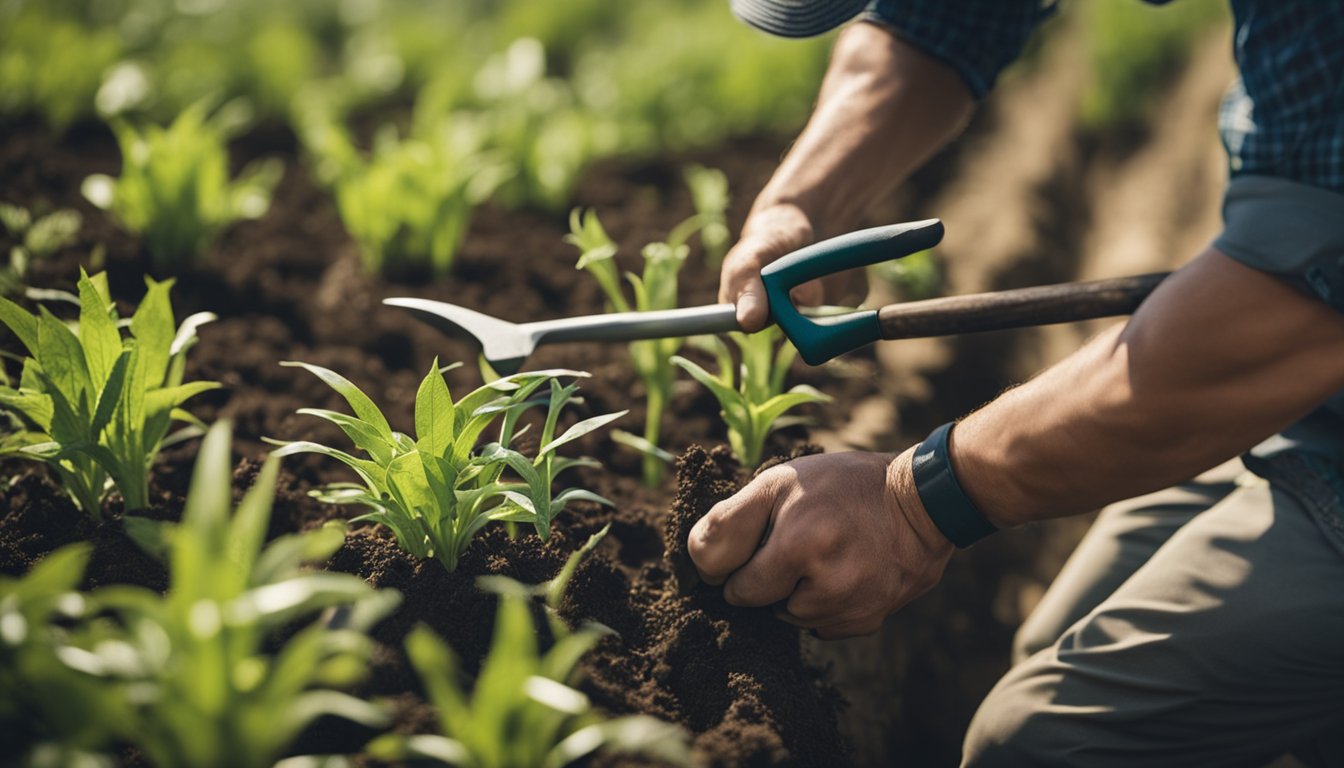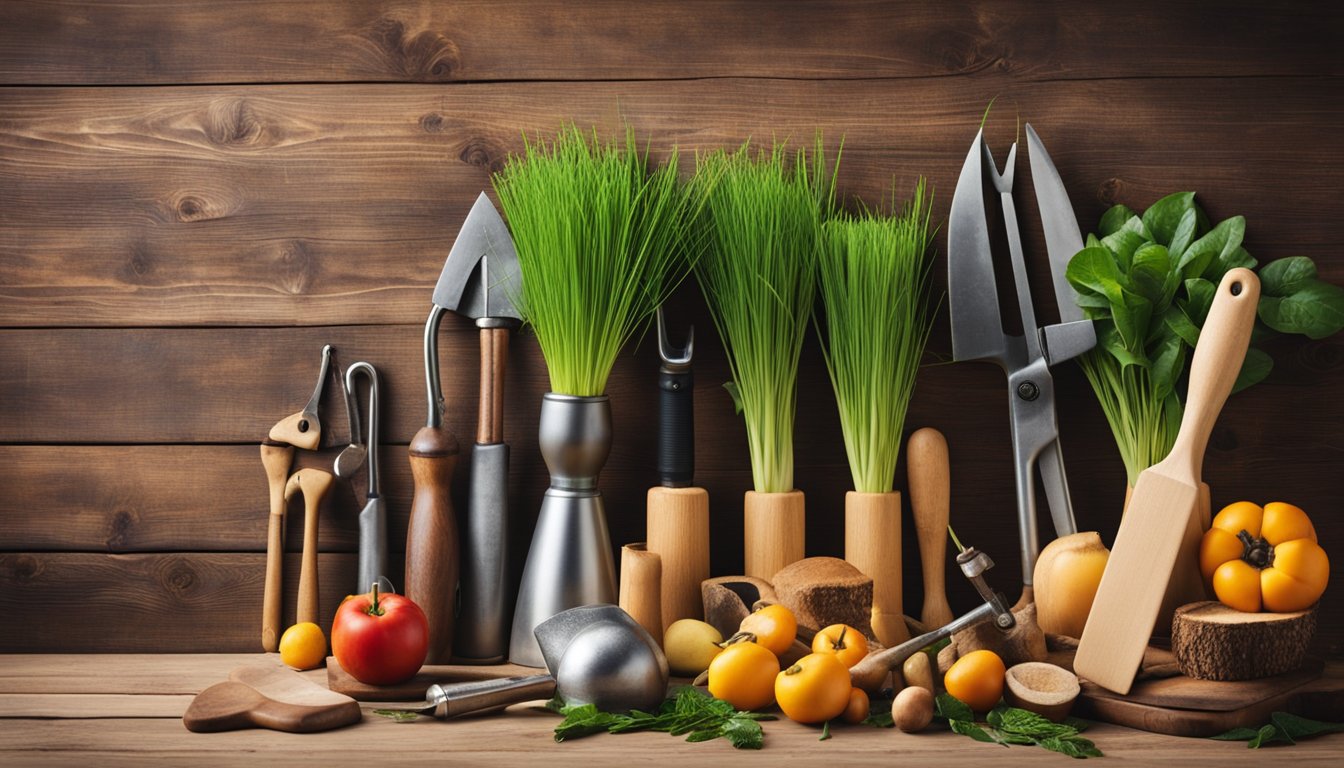Gardening is a rewarding hobby enjoyed by many. It allows individuals to connect with nature, grow their own plants, and enjoy beautiful outdoor spaces. However, gardening can also be tough on the hands. This is where gardening gloves with claws come into play. These specialized gloves not only provide protection but also make tasks like digging and weeding easier and more efficient.

Best Gardening gloves with claws feature built-in claws made from durable materials. These gloves can help users dig, plant, and weed without needing extra tools. As a result, they can reduce hand fatigue and make gardening less strenuous. Available on platforms like Amazon, these gloves come in various styles, sizes, and features to suit different users.
When choosing gardening gloves with claws, it’s important to consider the materials used, the size for proper fit, and whether they offer features like waterproofing or breathability. Users should look for gloves that balance durability with comfort. This ensures they can work in the garden effectively while keeping their hands safe. With these factors in mind, exploring the options available can lead to the perfect pair of gardening gloves with claws.
Best Gardening Gloves with Claws
This list highlights some of the best gardening gloves with claws available on Amazon. These gloves combine durability and convenience, making gardening tasks easier and more enjoyable. From digging to weeding, these products can help reduce hand fatigue and eliminate the need for extra tools.
FreshDcart Heavy Duty Garden Gloves
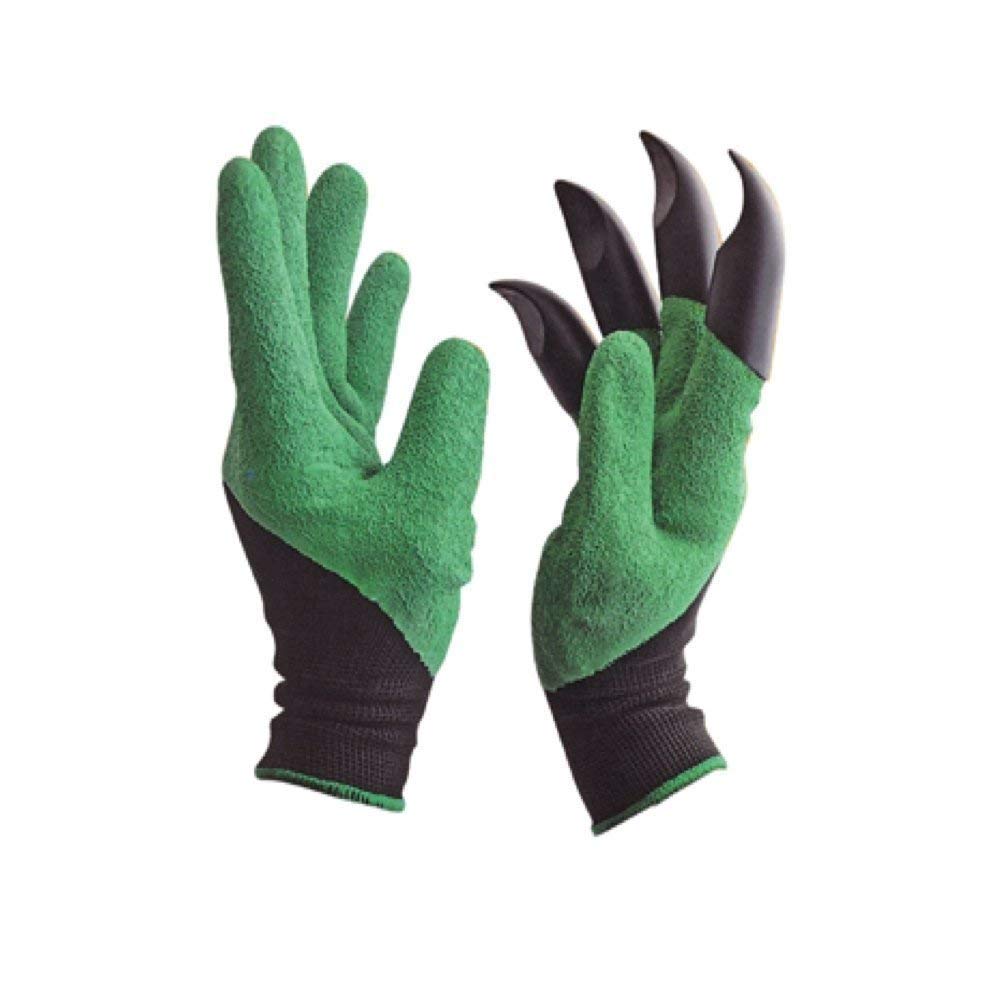
These gloves are a solid choice for casual gardeners looking for handy features at a reasonable price.
Pros
- Lightweight and comfortable to wear.
- Easy to wash after gardening tasks.
- Abs claws help with digging and planting.
Cons
- Claws can detach easily with frequent use.
- Not as durable as some might hope.
- Limited effectiveness on hard soil.
Using the FreshDcart Heavy Duty Garden Gloves was a straightforward experience. The lightweight design allows for all-day comfort, perfect for those longer gardening sessions. She found them easy to wash, which is a big plus after getting dirty. The claws made it simple to dig into soft soil, making tasks like planting and weeding easier.
However, there are some downsides to mention. The claws, while helpful, didn’t hold up as well as expected. A few users noted the claws could come off after repeated use, which can be frustrating during a gardening project. They might not be the best choice for tougher tasks or harder soil types.
Overall, the gloves are decent for light gardening. They offer a fun, clawed approach which makes it easier to tackle soft earth. With a price that won’t break the bank, they can work well for hobbyists who want a little extra help in the garden. Just keep in mind their durability might not meet every gardener’s expectations.
RZJZGZ Garden Gloves with Claws
These gloves make gardening easier with built-in claws for digging and planting.
Pros
- Durable ABS claws help with planting and weeding.
- Water-resistant material keeps hands dry.
- Easy to clean after use.
Cons
- Some users reported claws only on one hand.
- Sizing can be an issue for smaller hands.
- Quality varies; durability may be a concern.
Gardening can be messy, but the RZJZGZ garden gloves with claws provide a tidy solution. The claws on these gloves make digging and planting much simpler. Users enjoy the convenience of having tools right on their hands. The gloves are designed with four strong ABS claws per hand, allowing for effective weeding and soil manipulation.
The material is both water-resistant and breathable, which can keep hands dry during warm days. After gardening, cleaning the gloves is a breeze; just rinse them off with water. That saves time when moving from task to task.
While many find the gloves effective, some have noted issues with the product. A few customers received gloves with claws only on one hand, which is not as advertised. Additionally, the fit might not be perfect for everyone, especially those with smaller hands. Despite these complaints, many still appreciate the gloves for their overall functionality.
GROWTOP Gardening Claws
These gloves offer solid protection and comfort, making them a good choice for gardening tasks.
Pros
- Breathable material helps keep hands cool.
- Reinforced fingertips add durability.
- Multi-purpose design is useful for various gardening activities.
Cons
- Not waterproof, so they may not work well in wet conditions.
- Might feel a bit bulkier than regular gloves.
- Limited size options could be a drawback for some users.
The GROWTOP Gardening Claws combine comfort and utility. Made from breathable cotton fabric, these gloves allow for easy movement in the garden. They feature reinforced fingertips, making them a great option for tasks that require some extra handling, like planting or digging.
Users have mentioned that these gloves are quite durable. Many have reported wearing them for months without significant wear and tear. The gloves are also machine-washable, which helps maintain cleanliness without much hassle. This could be handy for anyone who enjoys getting their hands dirty while gardening.
These gloves come in a friendly green color, perfect for blending into the garden environment. While they provide excellent grip and flexibility, they are not meant for heavy-duty, wet conditions. Overall, they strike a balance between comfort and functionality, making them a worthy addition to any gardener’s toolkit.
Najiaxiaowu Garden Gloves with Claws
These gloves are a practical choice for anyone who enjoys gardening and wants to combine functionality with comfort.
Pros
- Durable latex foam protects hands from punctures.
- High-strength claws make digging easy.
- Breathable material keeps hands cool during use.
Cons
- Some users reported that thorns can still penetrate the fabric.
- Fit may not be suitable for all hand sizes.
- A few reviews mention lower quality than expected.
The Najiaxiaowu Garden Gloves with Claws present a clever addition to any gardener’s toolkit. The claws, made of strong ABS plastic, allow users to dig, loosen soil, and plant seeds without needing additional tools. This can be especially helpful for beginners or those looking to make gardening a bit more convenient.
Comfort is another strong point. The breathable spandex fabric makes these gloves suitable for warm weather. Many users appreciate how the gloves hug the hand’s shape, providing a secure fit that enhances gripping. After a long day of gardening, cleaning them is straightforward—just rinse them off, and they’re ready for the next use.
Despite these strengths, some gardeners noted issues with thorns getting through the material. Additionally, the fit may not be perfect for everyone, so trying them on first is advisable. Overall, for those seeking a durable and convenient gardening solution, these gloves offer good value for the price.
Yanmai Heavy Duty Gardening Gloves
These gardening gloves are a great pick for anyone who wants both protection and convenience while digging and planting.
Pros
- Advanced nitrile coating offers strong resistance to chemicals and abrasion.
- Comfortable and flexible design fits most hands well.
- Waterproof feature makes cleaning easy after a long day in the garden.
Cons
- Limited size options may not fit everyone perfectly.
- Some users might find the claws to be less effective for delicate tasks.
- Slightly heavier than traditional gloves due to the added protection.
The Yanmai Heavy Duty Gardening Gloves are designed for serious gardeners. The advanced nitrile coating protects hands from chemicals and hazardous materials, making them suitable for various gardening tasks, from digging to pruning roses. This feature is important for those who often handle tough plants and soil.
Users will notice that these gloves are not only durable but also comfortable to wear. The flexibility ensures that they can easily grip tools and plants without feeling restricted. Plus, their waterproof nature means that after hours of working in the dirt, cleaning up is a breeze.
In a world where garden tools are often used, these gloves bring an innovative approach. The built-in claws allow users to dig and weed without needing additional tools. This can significantly reduce hand fatigue, making gardening a more enjoyable experience.
For those searching for effective gardening gloves that combine protection and functionality, the Yanmai option stands out. The ability to simply wash them off and keep using them for multiple seasons makes them an excellent investment.
UTKARSH Heavy Duty Garden Gloves
These gardening gloves are perfect for anyone who needs a tough yet comfortable choice for their outdoor tasks.
Pros
- Durable ABS claws for digging and raking.
- Puncture-resistant material protects hands during work.
- Lightweight design makes them easy to wear for extended periods.
Cons
- Claws are not removable, which might hinder some tasks.
- Some users found them less durable with frequent use.
- Limited size options may not fit everyone comfortably.
The UTKARSH Heavy Duty Garden Gloves stand out with their robust design and useful claw feature. They provide excellent protection while gardening, making digging and planting much easier. The built-in claws are great for tasks like weeding and planting seeds, reducing the need for traditional tools.
One nice aspect is that they fit snugly, helping to keep hands safe from thorns and rough soil. Users have reported that these gloves also help prevent nail damage, allowing for a more comfortable gardening experience. However, the fixed claws can be a drawback, as some users wished they could be removed for specific tasks.
While the gloves are lightweight, making them easy to wear for longer periods, some feedback noted that they may wear out quicker with heavy use. Overall, these gloves are a good addition for casual gardeners looking for comfort and practicality in a single product.
Oblivion Garden Claw Gloves
These gloves are a smart choice for anyone looking for an easy way to dig and plant in the garden.
Pros
- Strong claws make digging and planting simple.
- Puncture-resistant material protects fingers.
- Two pairs provide great value.
Cons
- Might lose waterproof quality over time.
- Wear and tear can happen when working in dirt.
- Fit may not be perfect for everyone.
The Oblivion garden claw gloves offer a practical solution for gardening tasks. With built-in claws made from durable ABS plastic, they make digging and planting easier. This makes them perfect for tasks like rose pruning or loosening soil around plants. The gloves are also made from high-density rubber with a protective coating, which provides added durability.
Users have praised these gloves for the way they let hands stay clean while working in the garden. The protection from punctures is a bonus, as it keeps fingers safe during tougher tasks. Many have found them helpful for weeding and planting without the hassle of additional tools.
However, some users noted that the waterproof feature may decrease after a few uses. Working in tough soil can also lead to wear and tear, yet many still recommend these gloves for their overall value. With two pairs included, they are a solid investment for avid gardeners.
CROWNLANDBOW Garden Gloves with Claws
These gardening gloves make digging, planting, and weeding easier and more fun, thanks to their built-in claws.
Pros
- Built-in claws replace the need for separate tools.
- Waterproof and puncture-resistant material protects hands.
- Unisex design fits most hands comfortably.
Cons
- Some users may find the quality lacking.
- Claws are only on one hand, limiting versatility.
- Cleaning may be required after muddy jobs.
The CROWNLANDBOW Garden Gloves stand out for their unique claw design, perfect for anyone who loves spending time in the garden. With claws on one hand, it allows for easy digging and raking without the hassle of carrying tools. The gloves are made from flexible, waterproof material, which means they can handle tough gardening tasks without causing harm to your hands.
This glove offers decent protection against dirt and moisture, thanks in part to their puncture-resistant traits. Many people appreciate the breathable fabric on the back of the hand, ensuring comfort during hot and sweaty days gardening. The design is unisex, making them suitable for both men and women.
Despite their advantages, some users may feel the quality could be improved. They may not hold up as well after extensive use. Additionally, having claws on only one hand can be a limitation for those looking for maximum efficiency while gardening. Overall, these gloves are a helpful tool when taking care of plants or pulling weeds. They could make the perfect gift for gardening enthusiasts.
Chargenyang Garden Gloves
These gardening gloves are a practical choice for anyone who wants to dig and plant easily.
Pros
- Built-in claws make digging and planting faster.
- Durable material protects hands from scratches and water.
- Breathable design keeps hands comfortable during use.
Cons
- Some users may find them a bit bulky.
- Claws might catch on branches.
- May not fit smaller hands snugly.
With the Chargenyang Garden Gloves, gardening can become much easier. The claws are made from ABS plastic, making them effective for digging. Many users have found them useful for planting seeds and moving rocks. They save your hands from getting dirty or scratched, which is a big plus when working in the garden.
These gloves are also waterproof and puncture-resistant. This feature is helpful when pruning roses or tackling tough jobs. Users appreciate the durable natural rubber latex, which holds up well in demanding tasks. Those who wear them enjoy a better grip while raking leaves or handling thorns.
The breathable material adds to the comfort factor. It helps keep hands dry and cool during gardening, which is great for longer sessions. Whether it’s weeding or planting, these gloves feel good on the hands. While they can be a bit clumsy for some tasks, the benefits they offer usually outweigh the downsides.
Jupiter Industries Leather Rose Gardening Gloves
These gloves are a solid choice for anyone interested in gardening, especially when dealing with thorny plants.
Pros
- Good protection against thorns
- Comfortable fit for gardening tasks
- Durable leather material
Cons
- May not provide enough flexibility for some tasks
- Adjustments can be limited
- Some users find them difficult to work with
Jupiter Industries has crafted these gloves with gardeners in mind. They offer elbow-length protection, so users can tackle thorny bushes without worry. With a rating of 4.1 from 131 reviewers, many have praised them for their durability and comfort. The leather feels supple, which is a bonus when gardening.
When trying out the gloves, it was evident that they hold up well against sharp thorns. A gardener mentioned using them on a Bougainvillea branch, and the gloves provided ample protection. They reported feeling secure while handling tough, thorny plants. Many garden enthusiasts appreciate this feature.
On the downside, some gardeners found that the gloves can feel a bit stiff. This may make certain tasks a little tricky. Also, the lack of adjustable features can be frustrating for those who want a more tailored fit. Despite these drawbacks, they remain a favorite for tackling thorny patchwork.
Buying Guide for Best Gardening Gloves with Claws
When choosing gardening gloves with claws, it is important to consider several key features.
Key Features to Look For Best Gardening Gloves with Claws
| Feature | Description |
|---|---|
| Material | Look for durable materials that resist wear. |
| Claw Type | Consider claws made from ABS plastic for strength. |
| Water Resistance | Waterproof options protect hands from moisture. |
| Size and Fit | Ensure gloves fit well for comfort and control. |
| Breathability | Choose breathable fabrics to keep hands cool. |
| Flexibility | Flexible gloves offer better movement. |
Additional Considerations
- Length: Some gloves have longer cuffs for extra protection.
- Ease of Cleaning: Find gloves that can be easily washed after use.
- Scratch Resistance: Scratch-resistant materials help protect against thorns and rough soil.
Comfort and Usability
- Padding: Look for padded gloves for extra comfort during long gardening sessions.
- Weight: Lightweight gloves reduce hand fatigue.
By keeping these features in mind, she can select the right gardening gloves with claws for her needs.
FAQ’s for Best Gardening Gloves with Claws
Gardening gloves with claws offer several advantages for digging and weeding. They also vary in durability, comfort, and specific features, making them suitable for different gardening tasks.
What are the key benefits of using gardening gloves with claws for digging and weeding?
Gardening gloves with claws help with digging and weeding by providing built-in tools at the fingertips. This design reduces the need for separate tools, making tasks faster and easier. Users can dig, plant, and remove weeds more efficiently.
How do the durability and quality of heavy-duty claw gloves compare for different gardening tasks?
Heavy-duty claw gloves are made to withstand tough gardening tasks. They often use thicker materials, which last longer against wear and tear. For lighter tasks, standard gloves may suffice, but heavy-duty options are better for rigorous jobs.
Are breathable garden gloves with claws significantly more comfortable for long gardening sessions?
Breathable garden gloves allow air circulation, which keeps hands cooler and dryer. This feature can make long gardening sessions more comfortable. It reduces sweat buildup, allowing users to work for more extended periods without discomfort.
Can gardening gloves with removable claws provide a versatile solution for different types of garden work?
Gloves with removable claws offer flexibility for various tasks. Users can take off the claws when they need more sensitivity for delicate work. This versatility makes them suitable for both digging and more precise gardening tasks.
What are the best options for waterproof and scratch-resistant gardening gloves with claws available on Amazon?
Several waterproof and scratch-resistant gardening gloves with claws are available online. These gloves protect hands from wet conditions and thorny plants. Checking customer reviews and ratings can help identify the best options for specific needs.
How do gardening gloves with ABS plastic claws enhance the gardening experience compared to traditional gloves?
Gardening gloves with ABS plastic claws provide durability and sturdiness. The plastic material helps prevent damage to the gloves while digging. This feature makes them a better choice than traditional gloves, which may wear out more quickly during heavy use.










